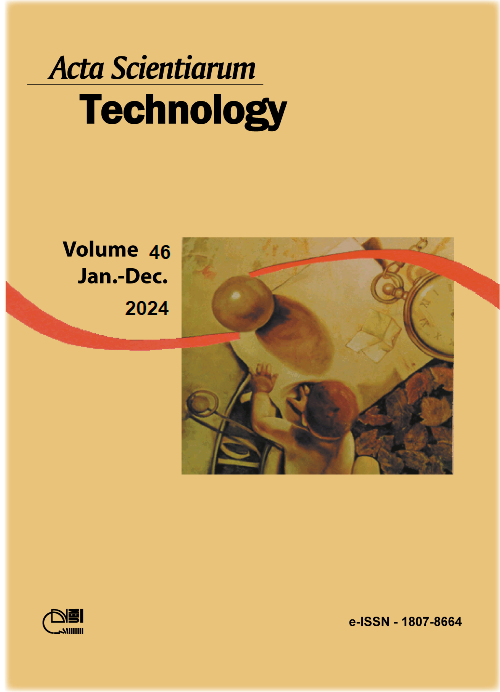Comparison of different freezing techniques, extenders, and cryoprotectants on quality and fertility of cryopreserved Salmo trutta f. fario sperm
DOI:
https://doi.org/10.4025/actascitechnol.v46i1.64924Keywords:
brown trout, cryopreservation, extender, straw, pellet.Abstract
There is still a lack of standardized methodology in the cryopreservation of Salmo trutta f. fario sperm. Thus, the present study was designed to compare current freezing protocols to improve and as well as to examine the post-thaw quality and fertilizing ability of cryopreserved sperm in Salmo trutta f. fario. Sperm samples were diluted at a 1:10 ratio in one of three extenders (Alsever´s solution, glucose-based, and ionic-based) containing four types of cryoprotectant (DMSO, DMA, MeOH, glycerol) at 10% concentration and frozen in 0.1 mL pellets on surface of the dry ice (solid carbon dioxide, 79°C) or in 0.25 mL straws 2 cm above of the liquid nitrogen (LN2) surface at a rate of ~30°C for 10 min.1 before storage in a mL cryotank (-196°C). The frozen sperm cells in straws and pellets were thawed in a water bath at 25°C for 30 s and at 20°C for 6 s respectively. Fertilization was carried out using a ratio of 5x105 sperm/egg in both freezing methods. The glucose-based solution including glycerol produced the highest post-thaw progressive motility (62.5 ± 1.24%), motility duration (57.2 ± 0.46 s), and viability (56.4 ± 1.57%) (p < 005) in the straw method. In breeding trials, similarly, sperm frozen-thawed with the glucose-based solution including glycerol produced the highest fertilization (54.2 ± 0.36%) and hatching (30.6 ± 0.28%) in the straw method. Fresh sperm used as control produced 82.6 ± 0.45% and 78.4 ± 1.27% fertilization and hatching respectively. It was concluded that sperm frozen in straws produced higher post-thaw sperm motility and fertility of eggs than those frozen in pellets. Also, the results suggest using of glycerol-supplemented glucose solution because of producing better results in both freezing techniques.
Downloads
Downloads
Published
How to Cite
Issue
Section
License
DECLARATION OF ORIGINALITY AND COPYRIGHTS
I Declare that current article is original and has not been submitted for publication, in part or in whole, to any other national or international journal.
The copyrights belong exclusively to the authors. Published content is licensed under Creative Commons Attribution 4.0 (CC BY 4.0) guidelines, which allows sharing (copy and distribution of the material in any medium or format) and adaptation (remix, transform, and build upon the material) for any purpose, even commercially, under the terms of attribution.
Read this link for further information on how to use CC BY 4.0 properly.











8.png)




